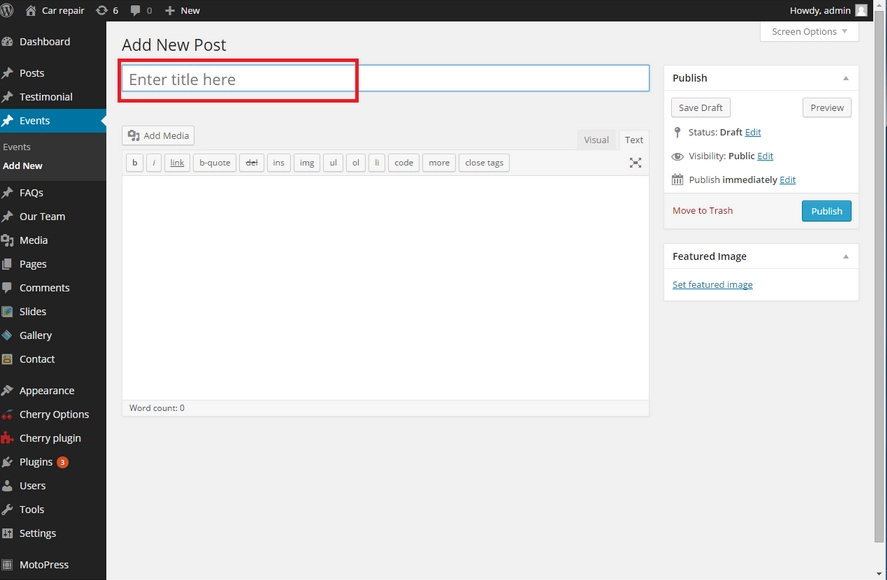Table of Contents
In the competitive landscape of B2B marketing, mastering keyword research is a pivotal step toward online success. Let’s delve into a comprehensive guide on B2B keyword research, breaking down the process into five crucial steps.
What are Seed Keywords, and Why Do They Matter?
Understanding the essence of B2B keyword research begins with grasping the concept of seed keywords. These are the foundation of your strategy, representing the core terms relevant to your business. They act as the starting point, branching out into many related keywords. Incorporating seed keywords strategically in your content ensures a cohesive and targeted approach, facilitating better visibility and relevance in search engine results.
To master B2B keyword research, delve into the nuances of your industry and customer needs. Analyzing how prospects articulate their requirements is vital. Incorporate conversational language and industry-specific terminology naturally into your content. This improves your SEO and enhances your chances of connecting with your B2B audience.
How to Uncover Hidden B2B Keyword Opportunities?
Unearthing hidden gems in B2B keyword research involves a meticulous exploration beyond the apparent terms. B2B local keyword research is pivotal in discovering opportunities that cater to your target geographical locations. Incorporate location-based keywords seamlessly into your content to capture the attention of local businesses seeking your services.
Furthermore, exploring niche forums, industry publications, and social media discussions can reveal invaluable insights. These platforms often unveil specific language and phrases used by your audience. Integrating these terms into your keyword strategy provides a unique advantage in targeting your B2B niche effectively.
Stay tuned for the next steps as we delve deeper into the intricacies of B2B keyword research, focusing on critical decisions like prioritizing search volume versus keyword difficulty and understanding the often elusive search intent.
Should You Prioritize Search Volume or Keyword Difficulty?
Determining the right balance between search volume and keyword difficulty is pivotal in your B2B keyword research journey. While high search volume indicates demand, it often comes with increased competition. Conversely, low difficulty means less competition but limited search interest. Striking the right balance is an art that involves considering your business goals and resources.
When crafting content, strategically weave in your primary and secondary keywords. This ensures that your content remains relevant and visible to search engines. Utilize tools like Google Keyword Planner to assess search volume and keyword difficulty, providing quantitative insights into your decision-making process.
Stay tuned for more insights into demystifying search intent and identifying quick wins in B2B keyword research.
Demystifying Search Intent: What Are Users Looking For?

Understanding the underlying motivations of user searches is key to creating resonating content. B2B keyword research services often involve decoding the intentions behind search queries. Whether informational, transactional, or navigational, aligning your content with user intent ensures a higher probability of engagement.
As you delve into this step, remember that catering to user intent goes beyond merely incorporating keywords. It involves crafting content that answers specific questions, provides solutions, or guides users through their journey. This approach enhances your SEO and establishes your authority and credibility in the B2B landscape.
Continue reading to explore the identification of quick wins and conducting competitor analysis in B2B keyword research.
Identifying Quick Wins: Which Keywords Can You Rank for Fast?
Quick wins in B2B keyword research involve identifying low-hanging fruits – keywords that offer relatively low competition and high potential for ranking. This doesn’t mean compromising on relevance. Instead, focus on niche keywords that align with your business goals and resonate with your audience.
Incorporating these quick wins strategically into your content gives your website an initial boost in search engine rankings. Leverage tools like SEMrush or Ahrefs for a detailed analysis of keyword difficulty and potential quick wins. This approach ensures you maximize your efforts and see tangible results sooner in your B2B keyword research journey.
Competitor analysis is another essential step in refining your strategy. Join us as we uncover techniques to spy on your B2B rivals’ keywords and gain a competitive edge.
Competitor Analysis: How to Spy on Your B2B Rivals’ Keywords?
Analyzing your competitors’ keyword strategies can provide valuable insights into the B2B landscape. Identify the keywords driving traffic to their websites and assess their performance. Tools like SpyFu or Moz can aid in this process, offering a comprehensive view of your competitor’s strengths and weaknesses.
Utilize this information to refine your keyword strategy. Identify gaps your competitors might miss out on and capitalize on those opportunities. Integrating competitor insights into your B2B keyword research lets you stay ahead in the digital race, capturing relevant traffic and potential leads.
As we progress, we’ll delve into keyword prioritization, understanding long-tail keywords, and optimizing content creation for B2B keywords. Stay tuned for actionable tips to build a robust B2B keyword strategy.
Keyword Prioritization: Building a Strong B2B Keyword Strategy
With a vast array of keywords at your disposal, prioritization becomes paramount. Focus on keywords that align closely with your business goals and target audience. Consider the relevance of each keyword to your products or services, ensuring that your strategy is streamlined and targeted.
Integrating long-tail keywords into your strategy further refines your approach. These are specific, detailed phrases that cater to niche searches. By incorporating these long-tail keywords naturally into your content, you enhance your chances of connecting with a highly targeted audience, improving conversion rates in the B2B landscape.
Join us in the following sections as we explore content optimization and measuring success in B2B keyword research.
Beyond Search Volume: Understanding Long-Tail Keywords and User Journey
Navigating beyond search volume brings us to the realm of long-tail keywords and understanding the user journey. Long-tail keywords, characterized by their specificity, cater to users in the consideration and decision stages. Incorporating these keywords seamlessly into your content enhances your SEO and guides potential clients through their purchasing journey.
Understanding the user journey is crucial. Identify key touchpoints and align your keywords accordingly. Utilize long-tail keywords in blog posts, product descriptions, and landing pages, ensuring your content resonates at every stage. By crafting a holistic strategy, you establish your brand as an authoritative source throughout the B2B customer journey.
Creating Compelling Content: How to Optimize for Your B2B Keywords
Optimizing content for B2B keywords involves more than just strategically placing keywords. It requires crafting compelling, informative, and engaging content that keeps your audience hooked. Develop content that addresses pain points, provides solutions, and showcases your expertise in the B2B industry.
When optimizing, ensure seamless integration of keywords into headers, meta descriptions, and naturally within the content. This enhances your SEO and provides a cohesive reading experience for your audience. Focus on creating value-driven content that establishes your brand as a go-to resource in the B2B landscape.
As we approach the conclusion, we’ll explore the final step: measuring success in your B2B keyword research journey.
Measuring Success: Tracking and Analyzing Your B2B Keyword Performance
Your B2B keyword research efforts culminate by tracking and analyzing performance metrics. Utilize tools like Google Analytics to monitor keyword rankings, organic traffic, and conversion rates. This data offers invaluable insights into the effectiveness of your strategy.
Regularly assess your keyword performance and adapt your strategy accordingly. Identify high-performing keywords and capitalize on their success. Simultaneously, address underperforming keywords by refining your content or adjusting your strategy. A dynamic approach to keyword analysis ensures sustained success in the ever-evolving B2B digital landscape.
In conclusion, mastering B2B keyword research is an ongoing process that demands strategic planning, continuous refinement, and adaptability. As you embark on this journey, consider leveraging specialized services on platforms like Fiverr to collaborate with experts in B2B keyword research. Their expertise can complement your efforts, providing a competitive advantage in the dynamic digital marketplace.
Remember, success in B2B keyword research is not just about rankings; it’s about establishing your brand as a trusted authority and driving meaningful engagement within your target audience. Stay informed, stay adaptive, and unlock the full potential of your B2B digital presence.














Leave a Reply